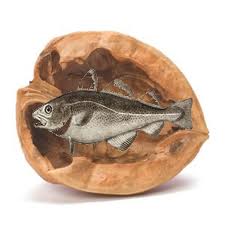Agribusiness Corn Farming Is Fueling the Continuing Rise in Nitrates in the Drinking Water of Farm Belt States
In Iowa, nitrate levels in water have reached levels never seen before.
After a long drought, a soggy spring washed fertilizers and manure off of farms and into the rivers that provide drinking water. The elevated nitrate levels are becoming a threat to human health.
According to an AP article:
Nitrate levels have soared because drought-withered corn plants didn’t suck up all the nitrogen spread on fields last year. The drought was followed by Iowa’s wettest April in 141 years, and that rain washed unused fertilizer into rivers, the primary source of drinking water for 45 percent of the state’s population.
Nitrate in water is an issue throughout the Midwest, but Iowa is especially vulnerable because about 90 percent of the state is dedicated to agriculture. Corn requires an abundant supply of nitrogen, which must be added to the soil through the application of nitrogen fertilizer or manure.
The Environmental Protection Agency requires nitrate in drinking water be kept at less than 10 milligrams per liter. Above that level can be deadly to infants younger than 6 months because the chemical can reduce the amount of oxygen carried in their blood. Pregnant women are advised not to drink water above the EPA limit, as are adults with reduced stomach acidity. There is conflicting evidence and expert opinion regarding nitrates as a cancer causer.
Without careful management, corn in the field can turn to nitrates in the water.
One river in Iowa, the Racoon River upstream from Des Moines, had nitrate readings of 24 mg/L last year. The Des Moines River reported a record high 18 mg/L. Both rivers furnish drinking water for Des Moines. The city of Cedar Rapids has also experienced high levels of nitrates.
Many city water plants lack the equipment needed to reduce nitrate levels and are reduced to blending high nitrate water with water of better quality to produce an acceptable (below 10 mg/L) product. Other cities, like Des Moines, have expensive nitrate reduction equipment but prefer not to use it because of high operating cost.
Iowa and Illinois rivers typically have some of the nation’s highest nitrate levels, but other top corn states also have issues, including Indiana, Michigan, Minnesota, Ohio, Wisconsin and the eastern portions of Kansas, Nebraska, North Dakota and South Dakota.
According to the AP article cited above, nitrate levels in those states have been rising since the 1950s but leveled off in the 1980s. In the last five years, they’ve been climbing again as high corn prices have driven farmers to plant near-record corn acres. One official said: “In essence what we’re doing is subsidizing cheap food, paying for it through the high cost of cleaning up our water after it’s contaminated by fertilizer.”
And the cost indeed is high. Des Moines has now had to switch on a $4 million nitrate reduction system that costs $7,000 per day to operate. In some Minnesota cities, the price of water has risen dramatically.
The nitrate invasion is, of course, the logical result of an unsustainable agricultural system that is focused entirely on short-term profits without regard to the consequences. Farmers are being encouraged to limit fertilizer use and to leave plants in the field to lessen erosion, and many have made changes. But for most, it’s agribusiness as usual and the rivers be damned.
While it is difficult for city water suppliers to remove nitrates from the millions of daily gallons they process, it is relatively easy for homeowners to remove nitrates from drinking water. Reverse osmosis removes nitrates handily.
Source Reference: Article above drew information from a 2013 article from PostBulletin.com.





![crops_306[1]](http://www.purewatergazette.net/blog/wp-content/uploads/2013/06/crops_3061.jpg)
